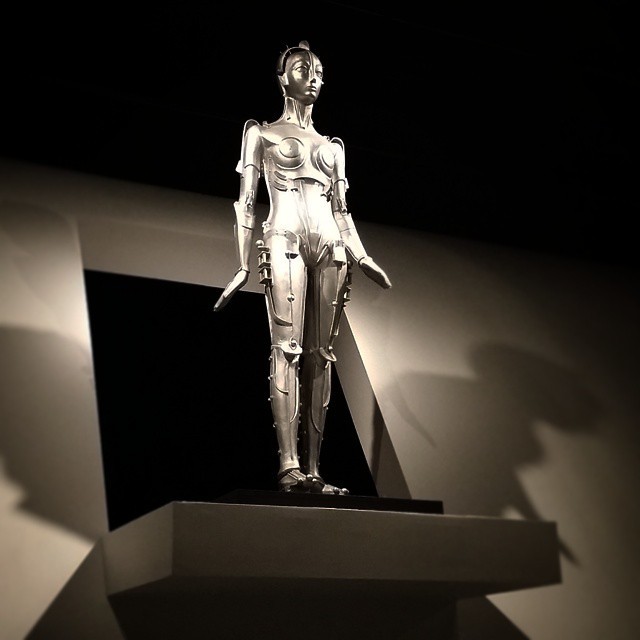
A Body Worlds piece
Professor Vesna discusses in detail in her lectures how advances in our understanding of the human body have driven numerous works of art. My personal favorite is the exhibit "Body Worlds," (image above) which is an artistic and scientific exhibition showing preserved bodies of humans and other animals in various poses and levels of transparency. The goal of this exhibition is both to showcase the beauty of the innerworkings of the body and to educate people on how this incredibly complex system functions through a visual medium. While other works are perhaps less overt and graphic, the journey of discovery of the human body by science has paved the way for a variety of interesting physiologically inspired creative works, like Emily Watson's organ-inspired jewelry, below:

Jewelry by Emily Watson
On the flip side, the drive for aesthetics has inspired medical advances as well - Professor Vesna discusses the origins of plastic surgery, which I find to be a fascinating field within medicine. She explains that the field of plastic surgery has its origins in wartime, when cosmetic injuries were very common and many wished to edit them out. While the subject is controversial even today, I find it pretty amazing that medical science has advanced far enough for small cosmetic fixes and changes to become relatively commonplace. I was particularly intrigued by the discussion of the artist "Orlan," who uses cosmetic surgeries as a performance art (shown below). Some may find it obnoxious or superficial, but as Orlan demonstrates, there is an inherent beauty in our ability to choose the way we look.

Orlan
Sources
White, Ryan. "Guests Advised of Sensitive Imagery Prior to BODY WORLDS Vital’s Calgary Run." CTV News Calgary. CTV News Calgary, 15 Jan. 2016. Web. 25 Apr. 2016.
"Metal & Enamel Jewelry." Emily Watson. N.p., n.d. Web. 25 Apr. 2016.
Heise, Axcel. "Contoversial Artist Orlan The Reincarnation of Saint-Orlan."Creative Mapping. Creative Mapping, 04 Aug. 2014. Web. 25 Apr. 2016.
Von Hagens, Gunther. "Prelude." Body Worlds. N.p., n.d. Web. 24 Apr. 2016.
"Artiste Transmédia Et Féministe. Météorite Narratif Du BIO ART. Son Oeuvre Questionne Le Statut Du CORPS Dans La Société. Ses Sculptures, HYBRIDATIONS Et Autoportraits Réinterprètent Le Rôle Des Nouvelles Technologies." Orlan. N.p., n.d. Web. 25 Apr. 2016.






